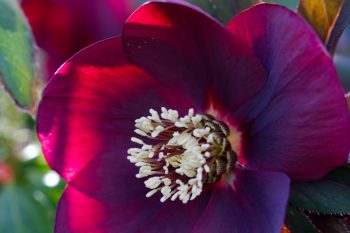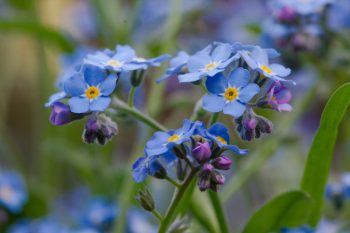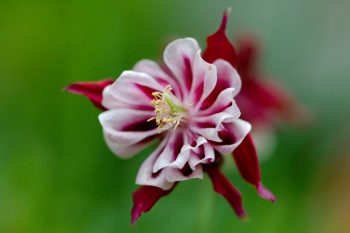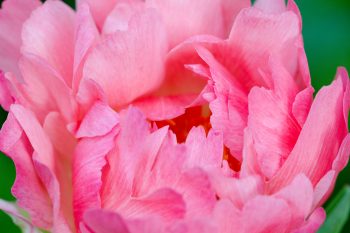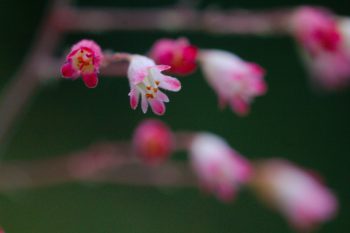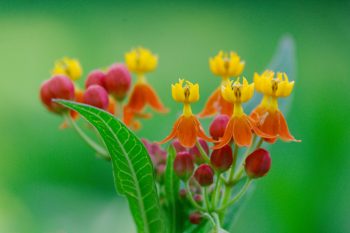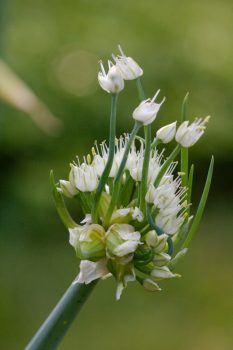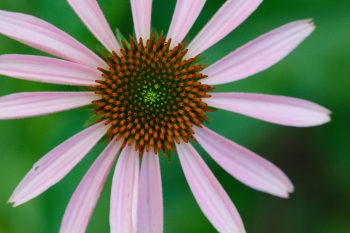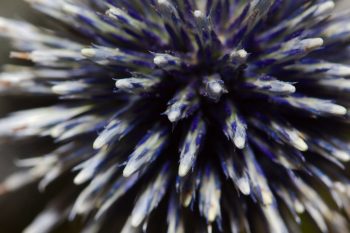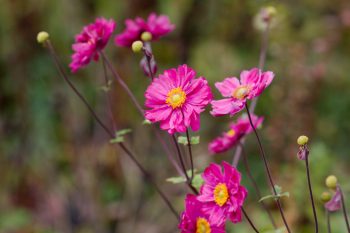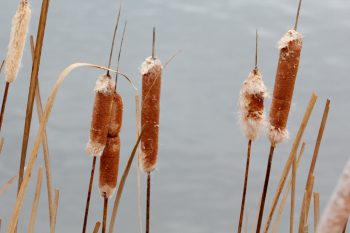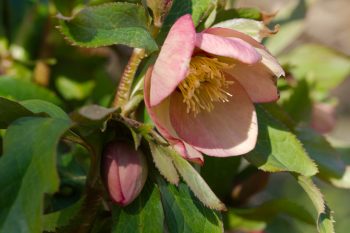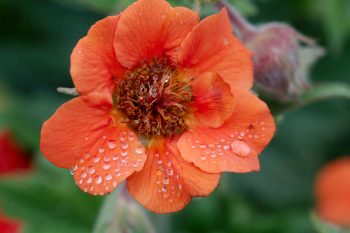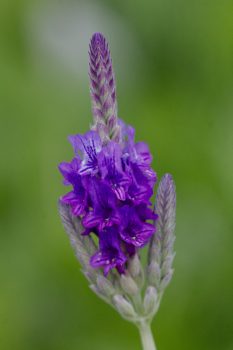This is, I think, my new favorite Lenten rose. I have two of them, bought from McClure and Zimmerman in the fall of 2014 but this is the first year the blooms have been what I might describe as fully formed. They are a variety called Red Racer but they don’t seem to be listed on the mzbulb web site any longer. Other outlets seem to have them, though. I really love flowers (and leaves) of this sort of color, especially when back lit. These aren’t in the best location it terms of the sun shining on them from behind, but it was just filtering through the shrubbery behind them this evening.
Tagged With: Perennial
Helleborus ‘Red Racer’
Windflower (Anemone blanda)
Last Sunday after church we walked to the Stadtman Preserve and I posted a picture of three little Chionodoxa forbesii blossoms. This week we went there again. The daffodils are starting to bloom and there are lots more Chionodoxa flowers opening up throughout the property. It was this little windflower (Anemone blanda) that really caught my eye. It’s such a pretty little thing. I’ve had a few of them in our garden but they never really amounted to much. I need to make a note to myself to buy a bunch of them and put them in. Interestingly, the flower is apetalous (it has no petals) and what look like petals are actually sepals.
Myosotis sylvatica (Woodland Forget-me-not)
The forget-me-nots (Myosotis sylvatica) are in full bloom in our garden. They self-seed and many of them are growing out in the grass. Cathy has dug a few up to replant in the garden beds where they won’t get mowed over. We both really love the powder blue of the forget-me-nots and are happy when the start to bloom. The buds are purple and the flowers, as they start to open, turn from a pinkish purple to the pure blue of the fully-formed flowers. You can see one transitioning at the right in this photo. The yellow “eye” in the center of each bloom turns white as the flower ages.
Lily of the Valley
The lily of the valley (Convallaria majalis) is starting to bloom. This is a great, little ground cover once it gets itself established. That can take a little while and they aren’t cheap when you buy them from the garden center a few pips at a time. They also have a tendency to “migrate” in the garden. In our back yard they are around the two smaller maple trees that we still have. Over the time we’ve been here they have expanded and died out in the central part of the bed. I wish you could make it “turn around” and head in the other direction but short of digging it up and physically turning it around, that’s not really possible.
The flowers don’t last very long but while they are blooming they are really pretty. Note that all parts of the plant are poisonous, containing cardiac glycosides, so don’t try to use them as a salad green. I don’t think that’s something I’d have thought to try anyway.
Columbine
The columbine (Aquilegia canadensis) is really coming into bloom now in our garden. We have a few different varieties and I won’t swear that they are all this species (in fact I don’t think they are). But this one, I think probably is. It’s one of two that have flowers with a fuchsia or slightly purple color in their flowers. The other one is darker, almost tending towards a brownish red. It also has slightly more double white parts. They are both nice in their own way, and I’m pretty happy with this self seeding through out the garden. It doesn’t go out of control, like some self-seeders tend to do, so I don’t really mind.
Peony ‘Coral Sunset’
This is one of three peonies that I planted in 2014, named ‘Coral Sunset’ that are growing will in the back garden. I’m a big fan of peonies and if I had a lot of space I might devote and entire garden room to them. There are both herbaceous and woody stemmed peonies and the are both worth growing. They do take a while to get established but they don’t really require much care. The reward in the huge, brightly colored flowers every spring. There is a nice peony garden at Seneca Creek State Park, if you are interested. I haven’t had a chance to go this year and it isn’t looking like I will, but it’s worth a peek, if you can get there when they are in bloom.
Adiantum pedatum (Northern Maidenhair Fern)
I’ve posted pictures of this fern before and I’ll probably do so again. It’s a pretty fern and worth growing, if you have any interest in ferns. I actually have it in a less than ideal spot that gets pretty much full sun from about noon onwards. It would be happier in full shade. The Missouri Botanical Garden page on this plant says, “High summer heat may cause fronds to brown by mid to late summer, particularly if good soil moisture is not maintained and/or plants are grown in too much sun.” Yep, that happens here. I really need to move it, or at least take a piece or two of it to grow in a better location. It does amazingly well in the sun, but it could be so much happier.
Heuchera sanguinea
We’ve had coral bells (Heuchera sanguinea) growing in our garden and in containers pretty much since we have been able to have a garden. It’s not the sturdiest of plants and we’ve had to replace them from time to time. I may be forgetting something but I think this is currently our only plant, growing in a container in the driveway. It’s fairly happy, probably because the containers get watered more regularly throughout the summer than the in-ground plantings. Also, although this gets a bit of direct morning sun, it’s in bright, open shade by early afternoon so it doesn’t bake. It seems to be happy and it blooms quite freely, which is nice.
Asclepias curassavica Orange
This butterfly weed, Asclepias curassavica, is also known as blood flower. Cathy recently bought a few plants in both orange (this one) and all yellow. Sadly, it is not hardy enough for in-ground planting as a perennial here, but it should do well in containers and brighten up the back patio. This one is in a container right outside our kitchen door and looks great against the green backdrop of Rudbekia growing around the patio. I especially like the bi-color nature of this one, although the all-yellow variety is nice, too.
Egyptian Walking Onion
I planted a few of these years ago at our old house, after having taken a few bulblets from the top of some growing in a garden we visited. A few years ago I decided to get rid of them, but that’s easier said than done. This one is growing in the grass outside the fenced herb garden that I made a while back. I think we need to be a bit more ruthless in pulling them up. They are interesting, though, and if we had a lot of space, I’d have a bunch. The stems, which are really tubular leaves, have flower clusters at the top. Then bulblets form and sometimes there are flower clusters growing from those bulblets. When the top becomes heavy from the size of the bulblets, the whole plant falls on its side, those bulblets take root and new plants spring up. It’s that spreading action that gives rise to the “walking” part of their name. Anyway, if you’d like some, feel free to ask and I’ll give you a few bulblets and you can start your own colony.
Coneflower
There are quite a few really amazing coneflower (Echinacea purpurea) varieties now and if I had the space and the time and the money, I’d consider a collection of the as one aspect of a large garden. They vary in color from the “standard” pinkish-purple bracts and with orange spikes, as seen here, to all sort of oranges, yellow, and darker purples. They flower shapes vary, as well, and they are all lovely. Sadly, there are enough plant-eating insects that enjoy them that they don’t often last in pristine condition. Photographing them in their prime means getting them when the flowers first open, because the bracts get holes in them almost immediately. Still, they provide color in a time when not a lot is blooming.
Lobelia cardinalis
This red Lobelia cardinalis is growing under the cherry tree at the north end of our yard. It’s really bright and I thought it was worth getting a picture of. With my back still bothering me I wanted to be really careful getting behind it so I could get the picture without having to bend over and with the trunk of the cherry tree available for me to brace the camera against. I was very carefully watching where I was stepping so I wouldn’t trip but about half way back, all of a sudden, I whacked my head against a ceramic wren nesting box hanging from a branch of the tree. I didn’t quite fall but it did my back no favors. Still, I got the picture. Coming back out I was even more careful where I walked and I kept an eye on that nesting box.
Sea Holly
By the time I got home this evening I didn’t feel like going out looking for something to photograph. Later in the evening, as is usually the case, I wished I had, because it meant I had to find something indoors to photograph. If finding something new and interesting to photograph in the yard is a challenge, how much more so is that true in the house. Fortunately there was a vase of flowers on the dining room table and in it were the blue and grey balls of Eryngium planum, better known as sea holly. These are interesting flowers. We had some in our garden in Gaithersburg and I should plant some here. The blue would be especially nice as a contrast to all the yellow-orange of the black-eyed Susan flowers.
Anemone hupehensis var. japonica ‘Pamina’
I know I posted a photo of this Japanese anemone recently but they’re so pretty I thought I’d post another. I got a few pictures with an American hover fly (Eupeodes americanus) on it, but I’ve posted a picture of one of those recently, too, and didn’t see a need to repeat that. We haven’t had much success with anemones in the past but we’re hoping this will do well. It certainly has beautiful flowers and is just the right height for along side our front walk. We really should get a half dozen of them, but one thing at a time.
Cattails
I left work a little early today and stopped at Redgate Park on the way home. If you’re familiar with Redgate Golf Course, then you now know about Redgate Park. I played this course back in the day—not a lot, only a couple times out of the one or two dozen golf outings of my sporting career—and but it has now been closed and is a park. According to The Sentinel, management of the course was transferred to Billy Casper Golf, a golf-course management company headquartered in Reston, Virginia. I can confirm that the state of the grounds it pretty pitiful.
I walked around a bit and took photos of Asiatic bittersweet (Celastrus orbiculatus) as well as these broadleaf cattails (Typha latifolia). I also saw a nearly frozen snake. I’m pretty sure it was alive but it could barely move in the cold weather. Kind of creepy, actually.
Lenten Rose ‘Mango Magic’
Our oldest Lenten rose, with its deep maroon colored flowers, has been in bloom for a while. We had such warm weather that a lot of things have been coming up early. We had a cold spell. Not terribly cold but with nighttime temperatures in the 20s. That damaged some of the tender leaves that were just coming up and also some of the buds that were starting to open. This Lenten rose, a variety called ‘Mango Magic’, was not quite as far along so was less damaged, although even here the petals of a few flowers were burned by the frost. Hopefully we’ll have more flowers to come, as it’s warmed up again.
Cichorium intybus (Chicory)
It wasn’t so hot today, although relative humidity was near 100%. Cathy and I went out for a walk at the former Redgate Golf Course, now Redgate Park. We saw a pair of white-tailed deer (a mother and fawn) as well as a few different wildflowers. This is a pretty common one, an import from the old world, but still a pretty flower. The others that I photographed were also non-natives. There was the Asiatic dayflower (Commelia communis), which has two white petal-like structures above the flower, and moth mullein (Verbascum blattaria), a pretty, little, white flower with a magenta throat and stamens. We also went to Rockville Cemetery, where we saw another fawn, and then Croydon Nature Center before returning home.
Anemone hupehensis var. japonica ‘Pamina’
We bought this Japanese anemone last year and it was in a pot over the winter. I planted it this spring and for a while it looked like the rabbits were not going to let it grow or bloom. Eventually I put a fence of hardware cloth around it, which they quickly knocked over. Now it’s staked to the ground with tent pegs and isn’t going anywhere. I’m a little bothered by the background in this, where the hardware cloth gives a regular, if out-of-focus pattern. Anyway, the anemone is quite lovely and I’m pretty happy with it. Hopefully it will get well enough established that we can take down the fence.
Geum ‘Rustico Orange’
Geum ‘Rustico Orange’
Cathy, Dorothy, and I went to Stadler’s and Johnson’s this morning and the girls bought a bunch of things. I mostly took pictures although I did buy one Santolina chamaecyparissus (lavender cotton) to put in a container. We’ve not had great success with Santolina in the ground because we don’t have good drainage but I thought it might do well in a pot. I like this little perennial and thought I’d share the picture, even though we didn’t actually buy it. There is a small garden at the entrance to our neighborhood and there are a few of these growing in that. They really catch the eye.
Lavandula pinnata
We met our newlywed friends Josh and Lizzie today for lunch. It was, we think, the first time we’ve eaten in a restaurant since the Covid lock down started. We sat outside and though it was a little cool, it was really nice to be able to sit and visit with them. On the way home we stopped at Fehr’s Nursery, mostly just to look around rather than to buy anything this time. I like this little lavender (Lavandula pinnata, sometimes called fern leaf lavender). It’s apparently a native to southern Madeira and the Canary Islands and I’m not sure how hardy it is, but it’s a pretty thing.
The lavender we have in our front garden, Lavandula stoechas ‘Anouk Supreme’, is starting to come back to life. I think we probably should have trimmed it before it started to grow, so it may not have as many blooms on it this year as it did last. It put on quite a show last year and I’d like to figure out the proper care so we can get that more regularly.

